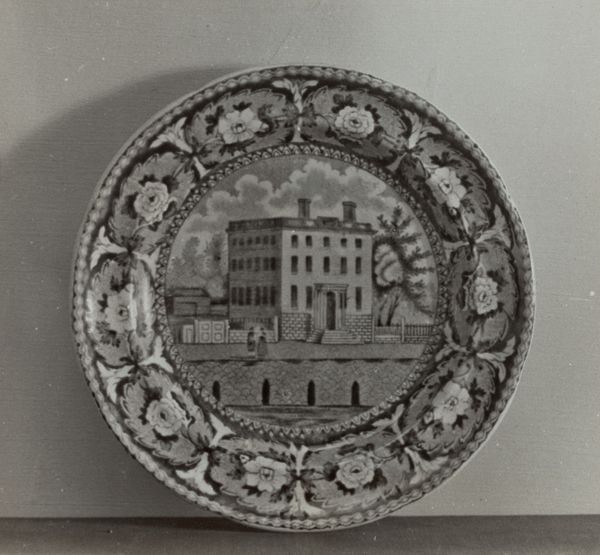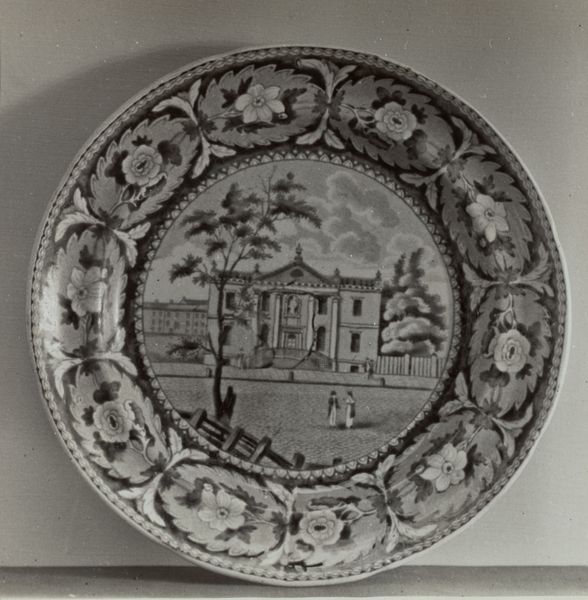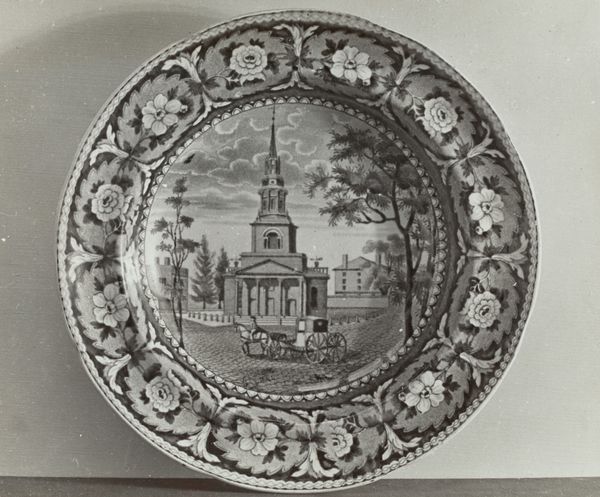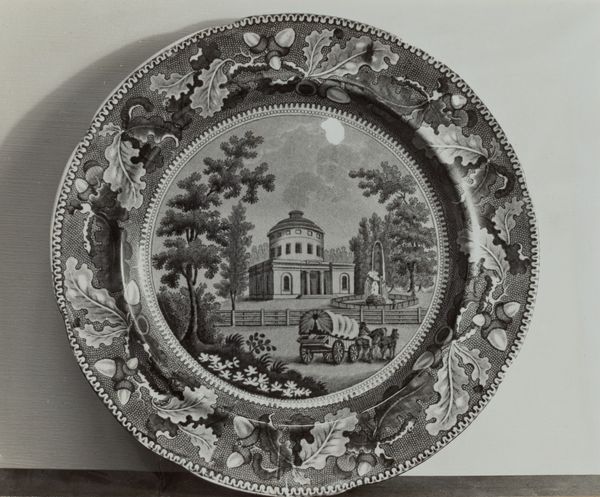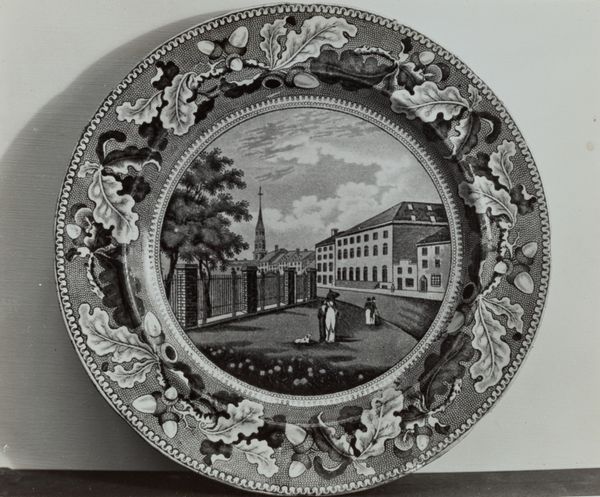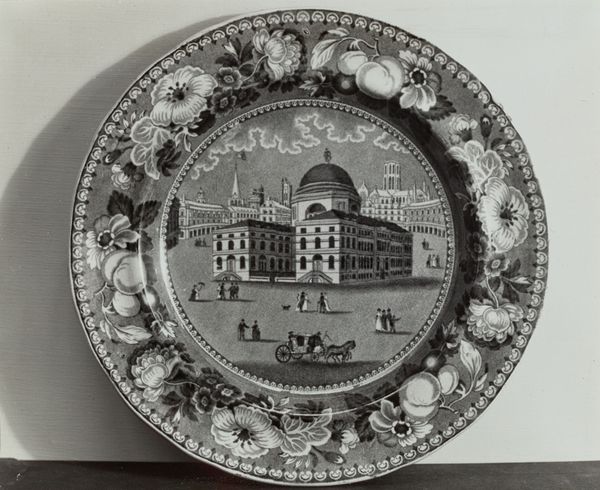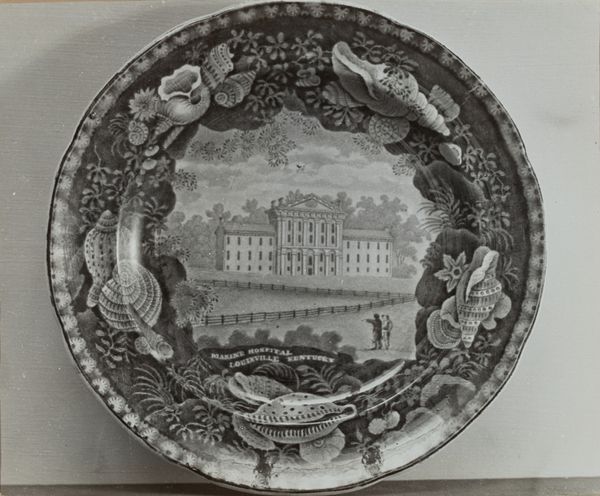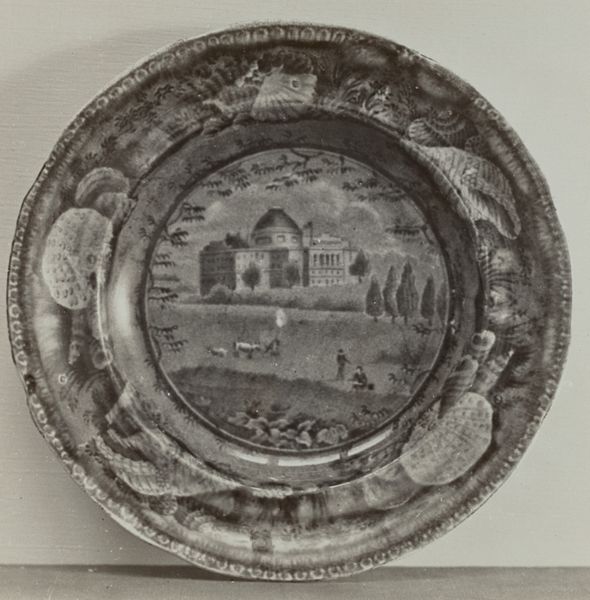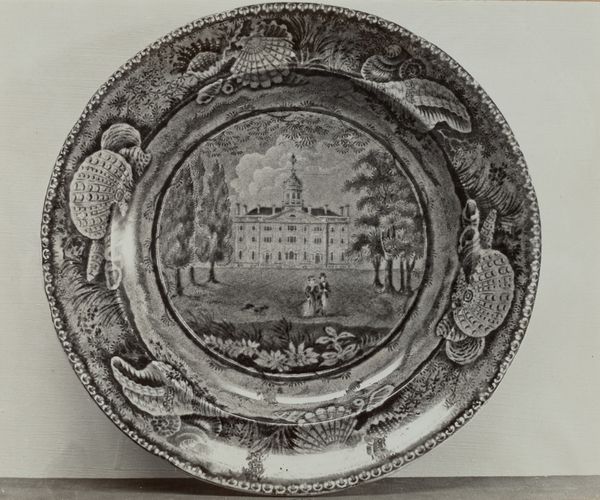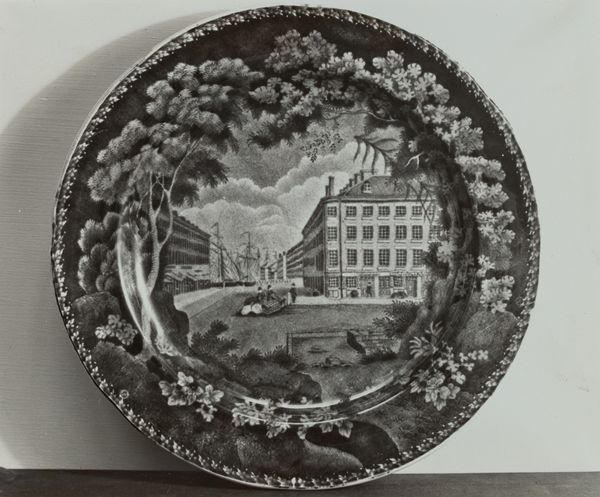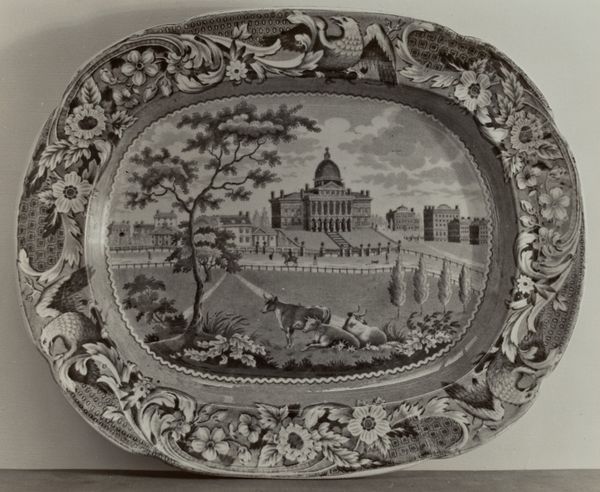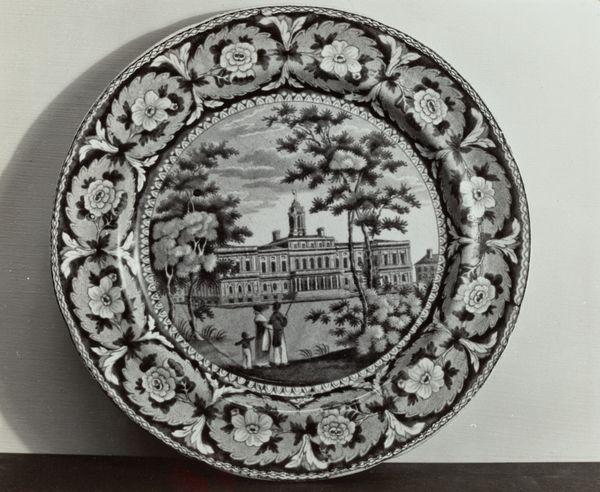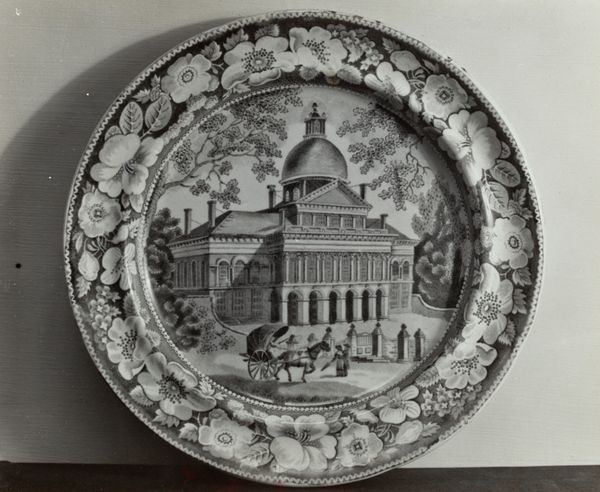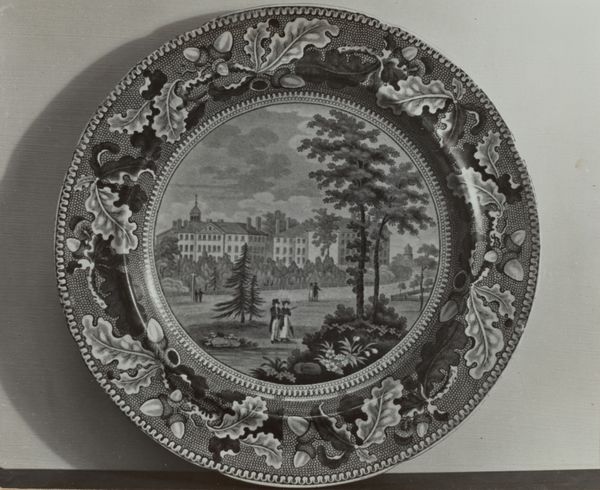
drawing, ceramic
#
drawing
#
pottery
#
sculpture
#
landscape
#
ceramic
#
ceramic
#
genre-painting
Dimensions: overall: 20.3 x 25.4 cm (8 x 10 in.) Original IAD Object: 7 1/4" in diameter
Copyright: National Gallery of Art: CC0 1.0
Editor: So, this ceramic plate, made around 1936 by Helmut Hiatt, is titled "Insane Hospital, Boston." It's… surprisingly domestic-looking, despite the subject. There's something unsettling about it, though, the building feels very imposing. What do you see in this piece? Curator: What I see is a layering of institutional power and individual experience, a narrative of confinement subtly framed by what appears to be a conventional domestic object. The very act of depicting an “insane asylum” on a plate, meant for everyday use, invites us to consider the societal perceptions and treatment of mental illness during that era. Notice the landscape; how does that imagery play against the implied confinement? Editor: That's a great point about the landscape! It's almost idyllic, contrasting with what I imagine life inside the hospital would be like. So the plate almost trivializes the experience of those institutionalized by putting the building onto common dinnerware? Curator: Precisely. Hiatt is presenting a sanitized, palatable image, perhaps reflecting the prevailing attitudes toward mental health in the 1930s. We should question: who was this made for, and what assumptions about mental illness did the artist and the audience likely hold? And to what degree is art complicit in perpetuating stigmatizing attitudes? Editor: So it’s like this plate becomes a historical document, reflecting potentially harmful social ideas, in this case how the world perceived and treated the mentally ill in the early 20th century. Curator: Exactly. The beauty and craftsmanship of the piece make it even more compelling, creating a dialogue between aesthetics and the darker realities of history. Editor: I didn’t expect to look at a plate and think so much about the history of mental health care. Thanks, this gives me a lot to think about! Curator: Indeed, sometimes the most unsettling truths are found in the most unassuming objects. Keep questioning, keep connecting the art to its context.
Comments
No comments
Be the first to comment and join the conversation on the ultimate creative platform.
